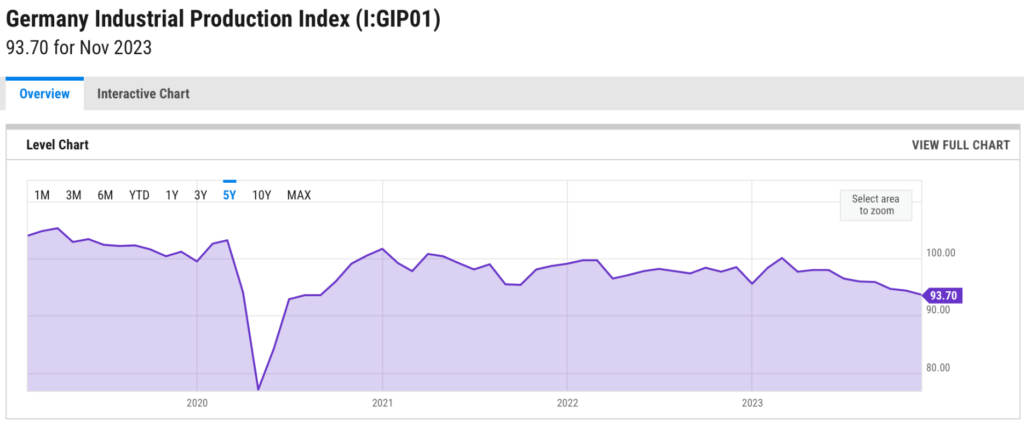Checkthisout
Solar Wizard
- Joined
- Nov 14, 2021
- Messages
- 5,063
They want censorship sooooooo bad.
"And one of the problems that we've noticed, when you look at those taped-up batteries, you see that they are refurbished," he continued. "These shops are going inside attempting to refurbish the batteries and do it their own way. This is a safety issue."When we tell you unregulated, illegal lithium-ion batteries are a hazard, WE MEAN IT. FDNY Fire Inspectors continue to check e-bike & e-scooter shops to ensure compliance, but many of devices & batteries are in private homes. They’re ticking time bombs, just watch our new PSA. pic.twitter.com/Y4Pl2grR80
— FDNY (@FDNY) January 16, 2024
"We know these fires can cause serious injury, and even death. We are grateful to our partners in city government for their out-of-the-box thinking on how we can embrace this new technology while also protecting lives," said Kavanaugh.Amid the uptick in e-bike fires and deaths, New York City leaders led by Adams and FDNY Commissioner Laura Kavanagh — who said last year that e-bikes are "incredibly dangerous devices" and called for additional regulation — have spearheaded a public education campaign about the dangers of the device and pushed policies to ensure safety.
In March 2023, Adams unveiled the city's Charge Safe, Ride Safe plan to prevent further harmful e-bike incidents. Then, months later, he announced the city had been awarded $25 million in federal funding to install 173 outdoor e-bike charging stations. In December, Adams said his administration would soon launch a battery-charging pilot program for delivery workers. -Fox News
Earlier this month, an e-bike battery exploded in a Queens bike store, resulting in a two-alarm fire. The incident came just days after another e-bike battery fire caused an explosion in a public housing complex in the Bronx, resulting in one death and injuring six others.WOAH! An e-bike battery caused an abrupt explosion, with the bike bursting into flames shortly after the owner noticed an odd smell and put it outside, as seen in a video released by the London Fire Brigade. pic.twitter.com/xMuaLvunc1
— Breitbart News (@BreitbartNews) May 26, 2023
E-Bikes Caused Record Fires, Injuries, & Deaths Last Year In NYC
Electric bicycles were responsible for a record number of fires, injuries and deaths in New York City last year.
In total, e-bikes caused 267 fires, causing 18 deaths and 150 injuries in the city, the New York Fire Department (FDNY) told Fox News, which notes that the figures represent the highest levels of each statistic - with deaths jumping 200% and fires increasing 21% over last year.
"As we rely more and more on micromobility vehicles to earn a living in our daily lives, we increase the risk of fires caused by lithium-ion batteries. And as mentioned, we had over 100 deaths in this city alone on these batteries," said Mayor Eric Adams (D) during an e-bike safety event last year.
"And one of the problems that we've noticed, when you look at those taped-up batteries, you see that they are refurbished," he continued. "These shops are going inside attempting to refurbish the batteries and do it their own way. This is a safety issue."
"We know these fires can cause serious injury, and even death. We are grateful to our partners in city government for their out-of-the-box thinking on how we can embrace this new technology while also protecting lives," said Kavanaugh.
Meanwhile, NYC has passed several laws to regulate lithium-ion batteries sold within city limits, and has implemented a policy to expedite investigations into the dangers. Last June, NY AG Letitia James warned of "significant risks" associated with e-bikes.
Earlier this month, an e-bike battery exploded in a Queens bike store, resulting in a two-alarm fire. The incident came just days after another e-bike battery fire caused an explosion in a public housing complex in the Bronx, resulting in one death and injuring six others.
El Niño is very likely close to peak strength and is likely to continue for the next few months, while gradually weakening. Despite the expected weakening of El Niño’s tropical Pacific sea surface signature, impacts to global climate will continue for the next few months. (ref)

Worth reading in full.Battery-powered electric vehicles will only ever capture 30% of global market share, the Chairman of Toyota has predicted, raising concerns about consumers’ willingness to align with Net Zero goals.
Akio Toyoda said that traditional fuel-burning cars, as well as hybrids and hydrogen fuel cell vehicles would make up the rest of the market.
The grandson of the founder of the world’s largest car manufacturer said shifting towards electric vehicles is not the answer when a billion people in the world are living without electricity.
He told a business event this month that limiting consumer choices and ability to travel by making expensive cars is not the answer.
He said: “Customers — not regulations or politics — should make that decision.”
He added: “Engines will surely remain.”

 wattsupwiththat.com
wattsupwiththat.com
they are certainly having trouble understanding why their models are so far from reality. Fluid dynamics can't be accurately predicted in a fish tank. Let alone globally.They are having a tough time understanding what’s really going on
they are certainly having trouble understanding why their models are so far from reality. Fluid dynamics can't be accurately predicted in a fish tank. Let alone globally.
Francis observes that for the U.K. and Germany, “the current situation of steady ongoing decline is inflicting damage that may well not be reversible. Even if energy prices suddenly come down in the U.K. by a factor of three or more, is anyone going to re-build Port Talbot once it has been dismantled?”What will the death of the green energy illusion look like? From time to time (see, for example, here and here) I have described a vision where some state or country runs headlong into a ‘green energy wall’ — an impassable barricade of physical impossibility, characterised by scarcity and blackouts, into which the country crashes suddenly. Among the Net Zero zealot countries I have identified as the leading candidates for imminently hitting such a wall are Germany and the U.K.
But perhaps, instead of a sudden crash, the demise of the green energy illusion will look more like a slow but steady decline, a gradual withering of economic activity and prosperity. In this scenario, high energy prices brought about by energy restrictions drive important industries out of business and, as good jobs disappear and energy prices increase, the people gradually and inexorably get poorer. Recent events in the U.K. and Germany seem to point in the direction of this type of scenario.
The latest edition of the GWPF’s Net Zero Watch newsletter has the headline ‘Net Zero is dying’.(Go here and follow the link for your own copy of the newsletter. Full disclosure — I am on the board of the American affiliate of the GWPF.) Nine linked news articles from the past couple of days all deal with recent instances of industrial decline in the U.K. and Germany, each one a consequence of energy prices intentionally driven upward in the pursuit of ‘Net Zero’.
Several of the pieces cover the impending closure of the Port Talbot steelworks in Wales, with the loss of up to 2,500 jobs. Illustrative is a January 19th piece in the Daily Telegraph by Allison Pearson, headline ‘Port Talbot has been sacrificed to the angry god of Net Zero‘. Although the Telegraph is behind paywall, the NZW newsletter has a lengthy excerpt. Here is a part:
The high price of U.K. energy makes Port Talbot uncompetitive… [N]et Zero. That absurd and misanthropic creed… calls British workers losing their jobs ‘progress’ while their carbon will now be emitted in India and China… [The U.K. will now be] the only G7 nation with no first-class steel manufacturing – are they serious? You might almost get the impression the nation was run by a fifth column plotting its downfall.

Considering the trillions of borrowed tax dollars alloted to this farce I would say I am paying them.?Guess who pays them?
Considering the trillions of borrowed tax dollars alloted to this farce I would say I am paying them.?
Right. That was why I included "borrowed". Not only is there impossible interest debt, but the inflation caused by dumping un earned money into the system means I have to work twice as hard to buy my things.True to some extent, but the amount they print from thin air by banking shenanigans dwarfs any tax generated revenue.
| The U.S. had a $2T bill for "Climate" and "other stuff". The problem with that is very little of that money went to climate stuff. Instead, it was $115B for bridges, $100B for broadband, $100B to schools, $9B to remediate lead drinking pipes, $300B to healthcare, and so on for many social programs. Some of it was semi-climate-related, e.g. $100B to "improve the grid and spur a shift to clean energy", $105B to cities for climate change damages. As far as I can tell, very little was earmarked for building renewable energy systems, it seems like a few million in grants to get some renewable systems in socially challenged areas, but it's hard to track. What would have happened if we had spent the $2T replacing fossil fuel energy plants? |  |
$2T(Govt efficiency factor 0.5%) = Two used solar panels from SanTan.Now where did this go wrong?
The U.S. had a $2T bill for "Climate" and "other stuff". The problem with that is
very little of that money went to climate stuff. Instead, it was $115B for bridges,
$100B for broadband, $100B to schools, $9B to remediate lead drinking pipes,
$300B to healthcare, and so on for many social programs.
Some of it was semi-climate-related, e.g. $100B to "improve the grid and spur
a shift to clean energy", $105B to cities for climate change damages.
As far as I can tell, very little was earmarked for building renewable
energy systems, it seems like a few million in grants to get some renewable
systems in socially challenged areas, but it's hard to track.
What would have happened if we had spent the $2T replacing fossil
fuel energy plants?View attachment 191091
From Lazard's the "average" LCOE for PV + ESS (energy storage) is $74/MWh. If $2T went into that, that would be $2e12 / $74/MWh = 27e9 MWh, or 27e9 MWh/ (1e6 MWh/TWh) = 27,000 TWh. The LCOE is over the 25-year lifetime. Or, 27,000 / 25 = 1080 TWh/y.
In 2022 the U.S. consumed 4,050 terawatt-hours (ref).China installed the most new PV last year, assuming 165 GW (~240 TWh/y) is also sustainable by the U.S. then we could convert in one decade at a fraction of the cost per year than $2T. But we have ~25 years, so we could reduce it even more, seems doable.
Given the perception is we already spent $2T doing this, I don't see much happening with more big future bills. Even worse, the prediction is we've done so little for so long it's not enough to just convert at this point; we're going to need to pay to remove some.

Adding more used transmission fluid to the diesel heater.should have turned the mini split down and the coal stove up today...
So, a new model – Open Access – developed. Here the academic, university or grant pays to publish the paper, which then becomes openly available. The going rate is £2,000-£4,000 per paper, depending on the journal.
Dear Author, |
You had 6 new downloads in December 2023 across your 1 paper in SJSU ScholarWorks. Your current readership: |
2355 Total Downloads |
Firefighters tackled the flames engulfing the single-deck bus at a bus garage on Chelverton Road in Putney on Wednesday.
Twenty people were evacuated from the garage before emergency services arrived on the scene.
A video posted on social media shows the large blaze inside Putney Bus Garage. …
Another London bus on fire this time inside bus garage …..

Who the heck is scirp? Let's google them....
Get ready for the coming little ice age!
https://www.scirp.org/journal/paperinformation?paperid=61284 So burn down the windmills and electric cars and fire up that V-8 powered leaf blower. The climate change alarmists have known about this but have desperately tried to cover it up. Science deniers!diysolarforum.com
In 2021 Cabells' Predatory Reports described SCIRP as a "well-known predatory publisher". In the Norwegian Scientific Index the publisher and all of its journals have a rating of 0 (non-academic). An academic study published in 2022 stated that SCIRP was "widely known to host 'fake journals'".


